#Matthias Schoenaerts Graffiti
Explore tagged Tumblr posts
Text
Nouvelle photo de Matthias qu'il a partagé sur Instagram et prise par Filip Van Roe.
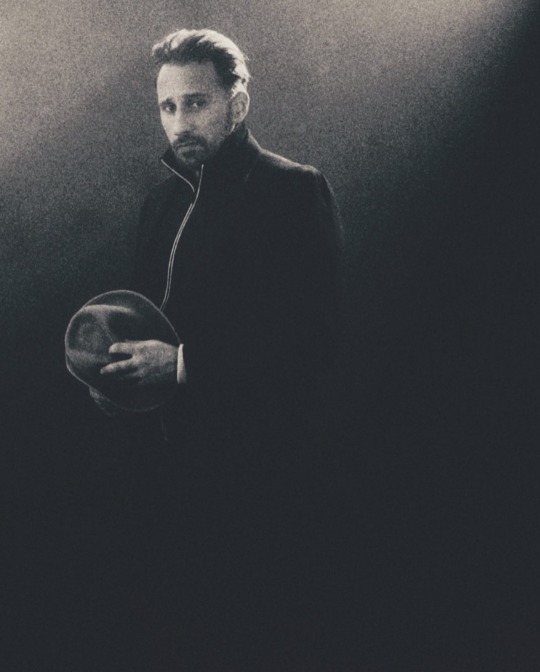
#actor#celebrities#celebs#cinema#hollywood#handsome#belgium#graffiti#django#movies#matthias schoenaerts
52 notes
·
View notes
Link
#Matthias Schoenaerts#Matthias Schoenaerts wife#Matthias Schoenaerts Girlfriend#Matthias Schoenaerts Instagram#matthias schoenaerts height#Matthias Schoenaerts Graffiti
0 notes
Photo






Matthias Schoenaerts aka “zenith” paints a Mural in Antwerp for the “Art Reconnects Belgium” project, backed by the Palais des Beaux-Arts de Bruxelles in July 2020. The mural represents a Hand, is called “Humains” and can be found on the walls of the Provincial Institute for Hygiene in the Kronenburgstraat.
“It’s called ‘Humain’ because people are central. In the past period we have noticed that we especially need each other, other people. The word humain also includes the word ‘main’ or hand. [...] I chose a hand because first of all it means connection. We are hands on each other. Although we shouldn’t be doing that now [...] Secondly, it is a reference to the Antwerp myth of Brabo that cuts off Antigoon’s hand. Antigoon repressed Antwerp. Third, it refers to our colonial past. Belgians have cut off the hands of oppressed people in our colonial past.”
#matthias schoenaerts#matthiasschoenaertsedit#mschoenaertsedit#togcastedit#togedit#dailytogcast#theoldguardcastedit#the old guard#usersharon#userskris#usereve#my gifs#florist/tattoo AU is OUT#graffiti artist AU is IN#*shoves the tattoo AU aside*#ALTHOUGH let's admit booker in a tattoo AU could possibly be both a tattoo artist AND a graffiti artist#i'm just yelling at the idea of him doing graffiti#(tbh matthias is such a skilled graffiti artist!!!)
400 notes
·
View notes
Text
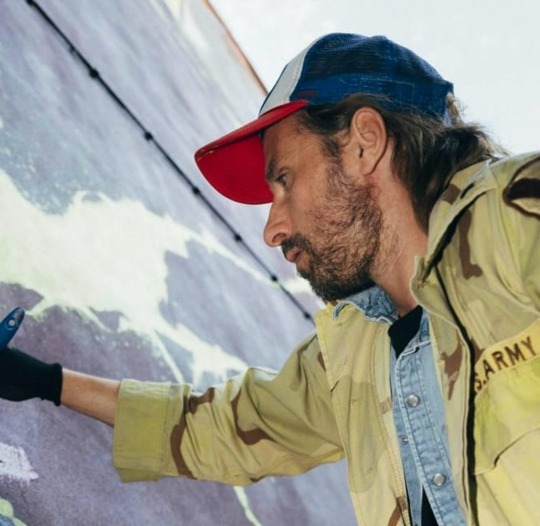
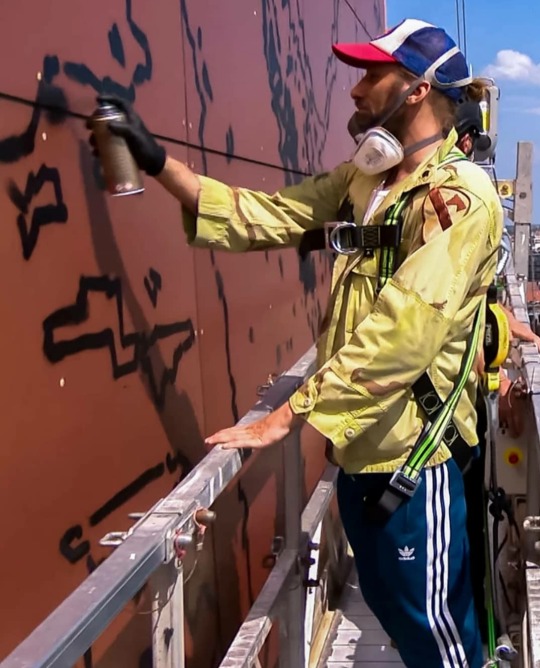






🎨🎨🎨 Artist 🎨 🎨🎨
63 notes
·
View notes
Text
The fact that most people don't know Belgian actor Matthias Schoenaerts is also 'Zenith' - an amazing underground grafitti artist - who just gotten more media attention recently. He just finished a piece in the prison of Antwerp, gaining a lot of respect by the inmates. The story he gave that piece - and each one he made before...
That man is deep.
69 notes
·
View notes
Text
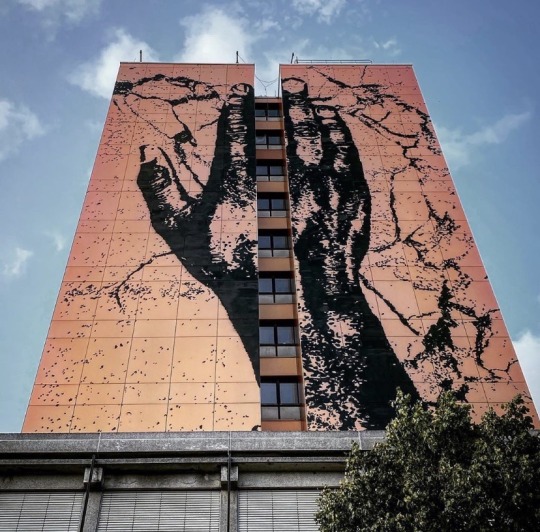


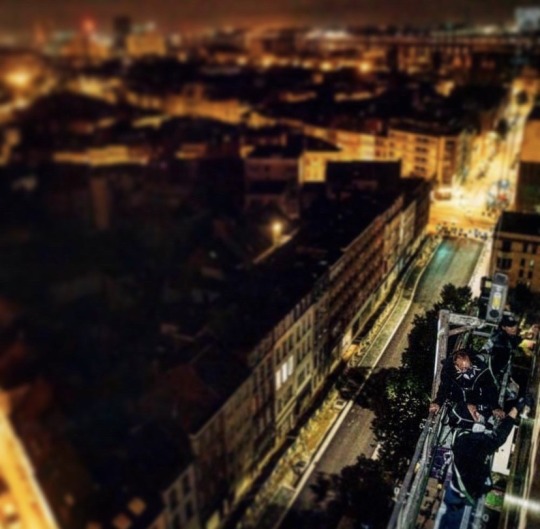
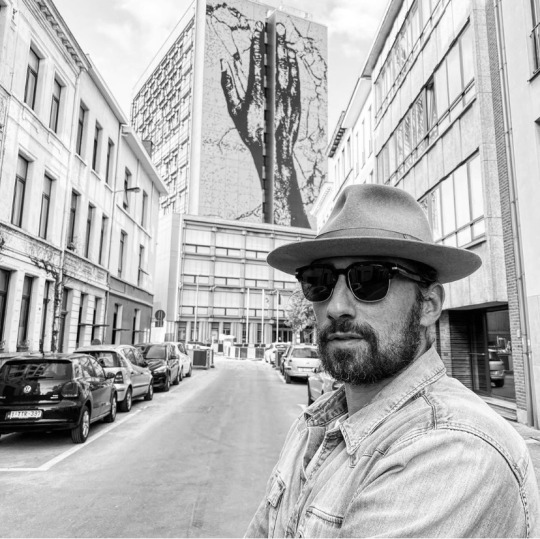


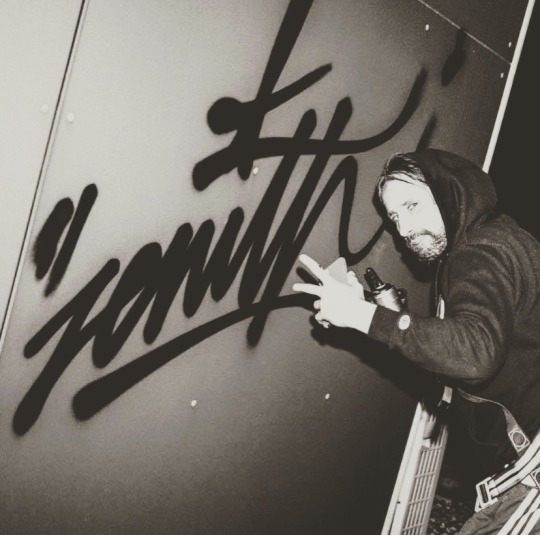

#Repost @__zenith______
・・・
Fissures and flaws. Surface cracks and deep scars. Tangible pangs: Our world is riddled with them. It hints at breaking, splitting, snapping, but this giant rock never caves to its torment. This is an homage to our home and the infinite stone it’s yielded us. I’ve photographed these so-called defects all over the world, then magnified and painted them somewhere else on the planet. This is a form of gratitude, announcing there’s glory in imperfection, triumph in pain and echoed connections everywhere.
This wall was a demand of King Philippe in collaboration
with @bozarbrussels.
They gave me total artistic freedom, as it should be.
The 6th wall in the series is named “HUMAIN”. It’s 800m2 (40m-20m)
The hand symbolizes creation, connection, contact and unity.
Human contact implies responsibility.
We are responsible for each other, especially now. This wall symbolizes our individual but also our historical responsibility.
The crack on this wall was shot on a statue of king Leopold II. The copper background refers to the resource that Belgium was mining heavily during the colonisation. The hand explicitly refers to the inhumane practice of Belgian officials cutting civilians hands off whenever they resisted working in the camps.
Besides many other atrocities that went on numbers show that approximately 18 million people were killed during the occupation, many millions had their hands chopped off.
It is a proper time to acknowledge the inhumain practices and horrific past and to consider a way of reparation for the inconceivable amount of pain and trauma caused by our nation. The time to speak and listen to each other is NOW. Let’s unite and avoid repeating the same neglectful and inhumane practices of the past.
Each one teach one🍀
My gratitude goes out to @nansschonkeren ✨ without you none of this would have happened. Endless respect and love.
Also thanks to @bozarbrussels for making it happen with us.
And last but not least thanks to the city of Antwerp for allowing this symbol of unity to grace our city.
@stad_antwerpen
#bozart #antwerp #reparation #leopold2 #colonisation #unity #corona #love #art # graffiti #amok
Pics by @filipvanroe and myself
39 notes
·
View notes
Photo








matthias schoenaerts (flemish, walloon) actor, film producer, graffiti artist, 1977.
#matthias schoenaerts#matthias schoenaerts avatars#matthias schoenaerts edits#faceclaim rpg#rpg faceclaim#faceclaim#rp resources#400x640
126 notes
·
View notes
Text
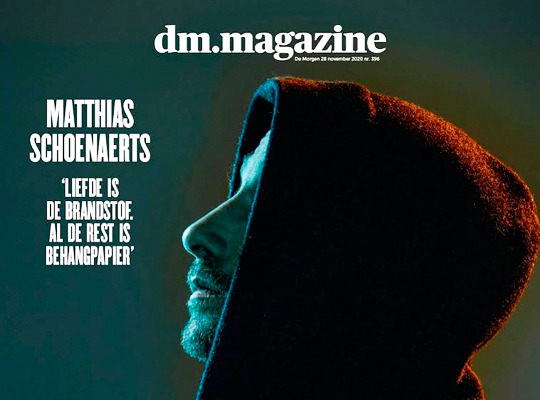
Matthias Schoenaerts full interview for De Morgen Magazine (original in Flemish, translated into English by @matthiasschoenaertsdaily)
Interview by Els Maes, published on November 28, 2020
Even a global pandemic will not destroy the optimism of actor Matthias Schoenaerts (42). Because he knows from his own experience how much beauty can emerge from the most hopeless situations. "I've had my back against the wall often enough, I'll always find a way out."
A bleak autumn day on a concrete square. There is lukewarm coffee, lukewarm Chimay and rolling tobacco. At dusk we see the silhouettes of fat rats that shoot past our ankles. And yet Matthias Schoenaerts will tell us in a glowing argument that this, here and now, is the very best place to be. That there is so much beauty to discover, he says. Le paradis c'est ici. As long as we want to see it.
"It's strange to say in this unpleasant period, but I've enjoyed the past few months enormously. It's the first time in ten years, since Runskop actually, that I'll be home for a long period of time. This is so beneficial: I am photographing, painting, writing. I can devote time and attention to the very simple things we'd otherwise race past."
"Seriously, look at that," he says, picking a leaf off the ground. "Those colors, that pattern. I can spend hours looking at the pure beauty of the things that surround us."
Above us a pigeon is wreaking havoc between the thinned out foliage. "While you are singing about the wonderful beauty of nature, that animal is going to shit on our heads," I say. "And that too will be a s-p-l-e-n-d-i-d moment," Schoenaerts answers.
Matthias Schoenaerts is Belgium's most successful international film star. But here and now, on a bench in his hometown, he is a technically unemployed actor, an all-round searching artist, but above all: fighter of cynicism. "I refuse to go along with all negativity and fear. The true battle today is cynicism versus courage. And I always choose the latter."
We're on the Oudevaartplaats, the square that everyone knows as the Antwerp Bird Market, and where Schoenaerts' childhood memories are waiting to be picked up. It comes into the conversation just like that: Brando, the cute chow chow that little Matthias got from his mom on this square, when here on the bird market puppies were still sold. "My dogs were my great loves. The home situation was often difficult, and with my dogs I found security. We had three chow chows, those fluffy lion dogs with a blue tongue. Brando was the first, I loved that animal."
"We lived in a small apartment with three dogs, anything but ideal. One day we let them go, to people with a large estate. That was heartbreaking."
There is a beautiful lesson in that, about love and letting go. It would have been selfish to keep your dogs if you could give them a nicer life elsewhere, wouldn't it?
"Absolutely, but I obviously didn't process that departure properly. Brando still appears in my dreams, after all these years. Then he returns home unexpectedly, and am I mad with joy.
"I often dream about my parents too: that reunion is so intensely beautiful and warm. Oh, there you are, finally! Those dreams are true to life, and the awakening is rock-hard."
Is that one of the reasons why you like being here in Antwerp, because here you feel more connected to the people that you loved?
"This is my home, my zero, I can't imagine a place in the world where I would rather live. When my mom was alive, and especially when she got sick, in between filming I tried to be with her as much as possible here in Antwerp. In the meantime I have an apartment here, my first permanent place of my own, but I've hardly been there in recent years. Now I can finally enjoy my home, I find peace, tranquility and inspiration there. I have seen fantastic sunsets on my roof terrace in recent months. So much beauty, and you can just admire it there, every day, for free. As long as you take the time to enjoy it.
"Normally I would have started filming again in April, and left for a hectic ride of at least two years, with projects that would follow each other quickly. I was at my limits, sooner or later I was going to bang my head against the wall. I feel how beneficial it is to slow down for a moment. David Lynch said that: 'Just slow things down and it becomes more beautiful'.
"As an actor you have to work in a big machine, according to a tight schedule. I have now discovered the pleasure of creating things for myself very spontaneously in my own cadence."
Is that work something you ever want to go public with?
"I want to do something with my photography someday, but I'm in no hurry. I'm also writing a film script, I've had an idea for a trilogy for a long time. It's a very personal project, and it takes time for it to crystallize into something very pure and proper. Maybe those films will come within ten years, maybe never.
"The most important thing is to keep busy. You have to look for something, anything, on which you can focus your passion, love and attention. Of course I would like to return to set, and those projects will come back later. But if I can't change anything about a situation, why worry about it?
"From a very young age I learned that there are not many certainties in life, I adapt easily to unexpected circumstances. There is one thing I can't stand, and that is feeling powerless. I never want to be the victim of a situation, I will always think: what can I do myself? Which way can I go? I have often enough stood with my back against the wall, I will always find a way out and take matters into my own hands."
So Schoenaerts decided to use this period to put Zenith - his artist name as a street artist - to hard work. Since the lockdown he has already created nine impressive murals, including one in the courtyard of the Oudenaarde prison, and one at the beginning of this month in the Antwerp Begijnenstraat, on the bare walls that form their furthest horizon for the prisoners. A moving event, he says. Not only by the touching conversations with inmates, and the forty-minute applause with which the prisoners welcomed him. "The mural contains a poem by my father. While I am there painting those beautiful words of my dad on the wall, I suddenly remember that my mom used to give meditation lessons to the prisoners there in the Begijnenstraat. I had completely forgotten about that until I stood there. How beautiful that is. Suddenly I felt my parents very tangible, very close to me."
It's a bit funny: a long time ago you were arrested for graffiti, now they invite you to prison to make a mural.
"I used to tag a lot, but I really don't like the vandalism that sometimes comes with graffiti. Defacing a facade, that's just ridiculous. But trains, bridges, tunnels.... frankly I think that's the max. Soon I'm going to do another oldskool graffiti wall, with some friends, back to the roots. But with permission, yes."
Scary dudes
The problems of the Belgian detention system are well known: outdated infrastructure, overcrowding and a system of pre-trial detention which means that some people are innocently stuck for years. Schoenaerts: "These are human lives that are destroyed by the Belgian state, isn't that scandalous?"
Schoenaerts' engagement started years ago, after meeting Hans Claus, prison director in Oudenaarde, who contacted him when he wanted to organize a screening of Le Fidèle, the film by Michaël R. Roskam starring Schoenaerts. Claus has been fighting for many years for a reform of our detention system, among others with the non-profit organization De Huizen, small-scale centers that are more focused on rehabilitation and reintegration of the detainee. How does Schoenaerts see his role? "Those murals are a kind of lubricant for me, to get attention for this problem. I am not the expert and I am certainly not a politician. This injustice touches me as a human being, and my message is clear: please listen to the people who have been working hard for decades to reform the system from the inside."
In The Mustang, your last feature film to be seen here before the lockdown, you take on the role of a prisoner who learns to tame wild horses and his demons. Has that role changed your vision?
"That rehabilitation program with mustangs really exists, and the chance of recidivism is almost zero percent. I had a conversation in the Begijnenstraat with the minister of Justice Vincent Van Quickenborne (Open Vld, ed.), and he told me that the chance of relapse here is 40 to 50 percent. Isn't that madness?
"That's what fascinates me most of all: what do we do with those detainees while they're stuck? How can we help to break the destructive patterns that put them in prison? Imprisonment is a punishment in itself, but someday we'll send those people back into society, so let's mainly support them in their self-development.
"In preparation for The Mustang, I visited prisons in the U.S., and talked to men who had been detained for 20, 30 years. Heavy guys: Aryan Brotherhood (powerful crime syndicate of neo-Nazis in American prisons, ed.), Mexican gang leaders... real scary dudes. You know what those say to me? That they live in fear every day, but they must not show weakness. Psychological counseling and things like that have their value, but that's often very cerebral. I especially believe in the healing power of art. Imagine that inmates can express all those fucked up emotions through art: I think that there is an enormous potential in this."
I heard you're playing with the idea of giving acting lessons to inmates?
"That's not a concrete plan yet, but I would love it if people from the creative sector would commit themselves to this: musicians, sculptors, dancers. Or writers who help prisoners put their own story into words.
"The cultural sector needs to start sticking its neck out. The sector is lying flat, and that's terrible. But we have to keep moving. We can all do something for the community, without being paid for it. Planting small seeds, doing something good for your fellow man, something beautiful always comes out of it."
Had you been to a prison before The Mustang?
"To visit friends, yes. In Merksplas, Hoogstraten, Hasselt, Dendermonde... We shouldn't talk about that any further. A prison is deep tristesse. Who dares to call that 'a hotel', shame on you."
This summer you painted an impressive mural in Paris in honor of George Floyd, murdered by American officers. And in Ostend last week a new mural was unveiled, with a 'decapitated' Leopold II. Is activism an important part of your street art?
"Graffiti used to be more of a style exercise for me, you want to create things that get noticed within the scene. But gradually I felt like communicating with a wider audience. I like to incorporate a lot of symbolism in my paintings, such as the cracks I photograph all over the world and then magnify them in another place. And the praying hands, a universal image of hope and faith in yourself. Art has the power to speak to our deepest emotions, and that is what binds us to the other. Connectedness, empathy, harmony, solidarity, that's the essence for me."
The corona crisis is one big exercise in empathy and solidarity. Sometimes we seem to lack that.
"I refuse to surrender to cynicism, and I surround myself with positive people who do beautiful things for others. This period would lead us to insights: how do we deal with each other? Do we help each other, or is it every man for himself? A human is such a wonderful creature, but we mess it up so much for ourselves.
"Yeah, I know. Some people who read this will think: this guy is smoking too many joints. (laughs) I don't smoke joints, and I'm not an unworldly idealist. But I will always focus my attention on the good, in spite of everything."
If you always want to see the good in people, are you sometimes disappointed?
"Yes, of course. I'm not a naive brat, I've learned to guard my boundaries. I can't please everyone all the time, and I don't let anyone rush me. I react badly when people put pressure on me because they want things from me. The perception of me that others have of me, I can't control. I don't let myself put out of balance easily anymore."
I saw that on your Instagram Stories you warned about fake profiles on social media, of people pretending to be you. That made you visibly angry.
"Really, that makes me angry. Every day I receive screenshots from people who have been tricked by crooks who approach innocent victims with my name and my pictures. There are stories of fans who have paid thousands of euros because they were promised a meet-and-greet with me. How disgusting is that? One person has transferred 14,000 euros to someone who pretended to be my manager.
"Of course, that raises questions about how gullible some people can be. But I've seen those chat conversations for myself: those criminals are terribly sneaky. They know how to play on the vulnerabilities of their victims in a very cunning way. This is manipulation and swindle of the filthiest kind.
"Really, I get physically unwell when I think about it. How can someone be so mean? If I ever catch these guys, I'm gonna bash their skulls in, I'm not kidding. Sorry."
Or: those crooks get a jail sentence, where you're going to give them acting lessons.
(laughs) "Okay, let it be clear that I think everyone should be punished for their crimes. My commitment to the prison system is not a plea for impunity, and I certainly don't want to romanticize crime.
"But when someone abuses innocent people's trust in such a cunning way, the question is: how did you derail so morally? And above all: how can we initiate a transformation in that person? Surely you can't lock someone up and expect that person to suddenly make better choices years later? First such a person has to take responsibility for his own actions."
Do you have something criminal on your conscience?
"No." (Thinks for a second) "No. Thank God. I couldn't live with that.
"I've probably hurt people in my life, like everybody else. Sometimes we just hurt people because of who we are, or because we can't fulfill what others want from us. But I have never harmed anyone consciously or criminally, no."
As a teenager you sometimes came into contact with the juvenile court, for vandalism. Do you think you could have ended up on the other side of the bars?
"Probably, a life can take strange turns sometimes."
What made you sit here today, and not get on the 'wrong' path?
"Wait... that's a good question. There's the one terrible dramatic event that caused a total turnaround in my life: when my dad went into a coma after a psychosis, and I was told he only had 24 hours left to live.
"I was 21 then, thrown out of school for the umpteenth time. I was doing graffiti and wanted to find my way creatively. But I was messing around, going with friends who... Anyway, there was latent danger, it threatened to go a little bit the wrong way.
"And then I got that phone call: come and say goodbye. Bam. The relationship with my father had been sour for years, we hardly saw each other. Until I stood there at his deathbed in intensive care... I only felt love, a wave of emotions that I had pushed down very deeply. That realization was rock-hard: this was it. My father and I will never get the chance to figure shit out, I thought.
"Long story, the rest is known: after 72 hours my father woke up from a coma against all odds. Like a plant: he could not speak, reacted to nothing or nobody. According to the chief psychiatrist, we had to accept that his condition would never improve. That was without the fighting spirit of my mother and me.
"It's because of that unlikely event that I've changed my whole lifestyle. For eight months, my mother and I went to visit my father every day. We talked to him, but he seemed to look straight through us. For hours we sat with him at the psychiatry department of Stuivenberg, how desperate those first months were also. We continued to fight, taught him to talk, to eat, to walk. A miracle, the doctors called it. Bullshit of course. It was love, dedication and stubbornness. Especially thanks to my mother, the lioness who kept fighting for him. And see how much beauty came out of it. My life then received an entirely different impulse.
"I suddenly think of an anecdote I've never told before. After a while we were allowed to take my father to the cafeteria once in a while, or to the garden. But he was absolutely not allowed to leave the hospital. Fuck it. I hid a bag of clothes for him, secretly dressed him in the toilet and took my father to the city. By bus, because I didn't have a driver's license. I wanted to stimulate his senses, test if any memories would come back. He was fond of Our Lady's Cathedral, so that's where I wanted to take him."
Matthiaske, why am I crying?
He plays it out. The written version here is only a dead script compared to the lived-through performance, right there on that dark square, just around the corner of the Arenbergschouwburg, where Matthias made his stage debut as a 9-year-old boy next to father Julien, as The Little Prince.
Matthias shows how he supported his frail dad, and how they shuffled in small, careful steps towards the cathedral. Dad looking at the ground to be sure not to fall. "I say, 'Dad, look up'. He looks up, and I see the tears rolling down his cheeks. I had never seen my father cry. 'Matthiaske,' he says, 'can you tell me why I'm crying?'
"I had already decided then that I would take my father into my house. Overconfident, yes, at that age, but they have become the most beautiful years of my life. Mom came by every day to help. Suddenly we were a bit of a family again, something we had only been for a short time when I was young."
It was at that time that you decided to become an actor. Why did you decide to become an actor?
"I had always resisted following in my father's footsteps. In my youth I mainly wanted to break away from my father, and seek my own path. I didn't want to have anything to do with him and all those loudmouths around him in the theater world. But most of all I was terrified that compared to the great Julien Schoenaerts I would never be good enough.
"Only now do I understand why I then decided to go to the conservatory. Not to become an actor, but to understand my father. We had so many years together, and now that we had been given a second chance, I wanted to get to know him as well as possible. By acting, maybe I could get closer to him." (pauses)
Sentimental fuss
He banishes the tears. It's one of the many things he has in common with his father, he says: they're both very emotional, but they hate sentimental fuss. "Come on, Matthias: breathe," he commands himself.
"Voilà, see how much beauty can come out of misery. What a chain of beautiful things came out of the fight my mother and I put up in the most hopeless situation. Who knows how differently my life would have turned out?"
"There are so many lessons in that. If we just talked about the rehabilitation of detainees, for example. It takes commitment. Not a workshop of two hours. You have to persevere, even in the event of a setback, with no guarantee of a happy ending. That's why I think it's so important to keep telling that story about my dad. Those are the values I believe in: dedication, stamina, attention, love. You can apply that to everything in life. Love is the fuel."
You often talk about your parents as if you want to keep them alive with your words.
"Because my mom and dad are the people I've loved most. With them I shared the most important moments, built the most beautiful memories. That loss is enormous. Life has been really fucking tough since they've been gone.
"That's what grabs me so much in this period. How many people have died of corona in Belgium?"
According to Google, today, on the day of the interview, the counter stands at almost 14,000 deaths.
"Fourteen thousand! Imagine how many people that has an impact on? How many people have suddenly lost their mother, father, brother, sister, best friend or neighbor? Behind those figures lie tens of thousands of poignant stories, of people who see a loved one torn from their lives. That is a mountain of unresolved grief, and far too little attention is paid to it."
Earlier during our conversation a guy had walked past coughing and maskless. It pissed Schoenaerts off: "And whining about masks or strict measures. Grow some fucking balls. Having to say goodbye to a loved one, that's the worst thing."
"Isn't that what this period teaches us? That our time here is limited? And what really counts in life: sharing moments of beauty with the people you hold most dear. All the rest is wallpaper. Having success, making movies, that's all fun. But the day you lie on your deathbed, you really don't think about the professional successes on your resume. No way."
83 notes
·
View notes
Text




Appreciation post of Matthias Schoenaerts in Far from the Madding Crowd. This is the first movie I ever saw of Matthias, and I had an instant crush on him.
One of the main reasons I enjoyed The Old Guard is because he was on it. And I really love that TOG is getting so much appreciation, because now more people is seeing how talented and handsome he is. 💕
Also, he's a graffiti artist and that's super cool!
66 notes
·
View notes
Text
The Old Guard and Graffiti
Just learned that Matthias Schoenaerts does graffiti and now I can’t stop thinking about the team leaving various messages on walls throughout history.
Joe started to popularize the whole “Kilroy was here” graff in WW2 because he thought it was hilarious and Nicky always carry a sharpie to respond to public bathroom walls writing with his cryptic advice. Andy left tags for Quynh all over Rome and every other city they traveled by because she was young and in love and did stupid romantic things like that. She get a whiplash when some historian says they’ve found a man’s declaration of love on a bit of wall from ruins and she remembers she wrote that one eons ago.
#booker is too tired to leave something behind on a wall he just walk by#tog#yusuf al kaysani#nicolo di genova#andromache the scythian#the old guard headcanon#joe x nicky#em speaks
63 notes
·
View notes
Text
Can I just say I’m so glad The Old Guard was getting attention on tumblr. Matthias Schoenaerts has been my favorite actor for over a year and I’m glad he’s finally getting some recognition in this community. I knew that The Old Guard was going to be an amazing movie simply because he was in it. I have not yet seen a film of his that was bad. He chooses each movie carefully and with such respect to acting that they can’t possibly be bad. For God’s sake, he turned down the role of Batman because there’s no meaning to the role anymore. Here’s a comprehensive list of his works I’ve seen and the order I watched them in.
The Laundromat (available on Netflix): I watched this a month before “discovering” Matthias. Turns out he’s the asshole who I was glad died. This movie would probably be considered boring to the average viewer. However, I am someone who enjoys introspective and sometimes hard to understand films. This movie is about whistleblowers and how the rich avoid taxes by using offshore bank accounts. I watched it during the whistleblower scandal in 2019 so it was uncomfortably relevant. That being said, I will not watch a few specific scenes in the very beginning because it shows the images of drowned people. That is something this film (and another one of Matthias’) have helped me come to realize; I don’t like the image of drowned bodies.
The Danish Girl (available on Netflix): This movie depicts Eddie Redmayne as a transgender woman. Some people found this controversial because he is not transgender in real life but I could not imagine someone else depicting Lili. I think it is a beautiful retelling of the first transgender woman to undergo the first part of gender reassignment surgery. I cried at the end and am unashamed to say so. I think it’s a wonderful LGBT film and Matthias is an added bonus.
Suite Française (unavailable unless purchased): It is such a shame that Netflix took this movie from their collection because I think it was beautiful. Matthias is the main love interest in it as a Bruno, a Nazi stationed in Bussy. He was a composer before the war and I like how the movie depicts a soldier fighting because of familial requirement (Bruno comes from a military family) instead of personal belief. However, he is still a Nazi! I am not a Nazi sympathizer! It is uncomfortable in that sense but it is a romance, so...
The Command (available on Netflix): This is a film based on a true story of a Russian submarine sinking and men being trapped in it and still alive. It is heartbreaking and, at times, funny. I’m the type of person who will google the end of a movie if it is based on true events (‘cause it’s not spoilers if it’s history, right?). However, I did not do that with this movie for some reason and that was a big mistake. SPOILER IN ASTERISKS *I cried at the ending and I will not watch it anymore because of the whole drowned bodies thing.* All in all, it’s a beautiful movie based on an unnecessary tragedy that resulted from politics.
A Little Chaos (available on Netflix): This is a movie that shows an awesome female lead taking charge and not letting men get in the way of her talents. I feel like the romance between Matthias and Kate Winslet came second to that, which I appreciate. Also, this film has Alan Rickman playing the king who ordered the construction of the gardens of the Palace of Versailles (can’t remember which king). So like... that’s freaking awesome.
Our Souls At Night (available on Netflix): This is also a film that to most viewers would be considered boring. It has very little Matthias but I thought was at least worth mentioning. It’s a sweet story about and older man and woman who have both been left alone by time and start sleeping platonically in the same bed. I think that idea is sweet overall just to prevent touch starvation which can seriously screw a person up but the film also has an unlikely ending for a romance film.
The Old Guard (available on Netflix): This movie, regardless of Matthias is amazing! I’m not an action movie person but this was great and I’ve already seen it twice. I also made my friends watch it with me. The soundtrack is subtle, unusual, and awesome for the film. It was directed by a black woman (which definitely shows). Like seriously, there was not one scene of Andy in a sports bra. She wears a tank top the entire time. There is a canon and wholesome gay relationship and an implied lesbian one. The gore and violence, in my opinion, is tasteful and not overdone. Also, the choice to cast Harry Melling as the villain (the guy who played Dudley in Harry Potter) was a good choice. There’s just something about him as Steven Merrick that just makes me mutter “twit” and want him to die.
This high praise is without even seeing his most know works such as Rust and Bone, Far From the Madding Crowd, Red Sparrow, Bullhead, and The Mustang. Unfortunate, these films are not available on any streaming service I subscribe to but someday I’ll watch them.
Seriously guys, check Matthias Schoenaerts out. He’s an amazing actor who really dedicated himself to the quality of his work. Also, he does graffiti which is rad af.
#matthias schoenaerts#the old guard#charlize theron#the laundromat#meryl streep#the danish girl#eddie redmayne#lgbt#transgender women#lili elbe#suite francaise#the command#a little chaos#kate winslet#alan rickman#our souls at night#netflix#movies
78 notes
·
View notes
Text
Matthias à la salle de sport ❤️ ❤️ ❤️
#matthias schoenaerts#actor#celebrities#celebs#cinema#hollywood#handsome#belgium#graffiti#django#movies
35 notes
·
View notes
Photo
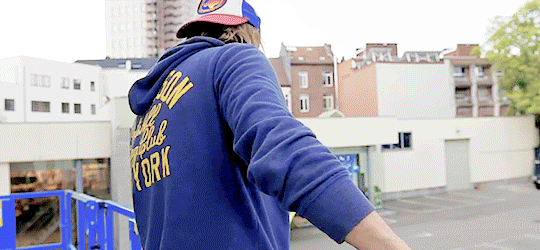
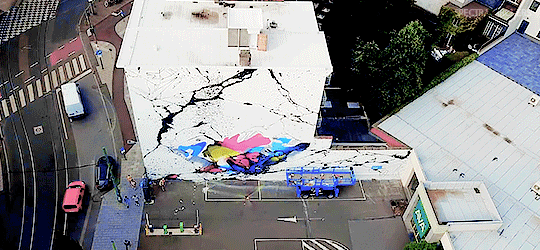
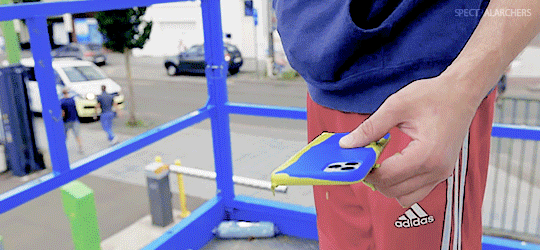

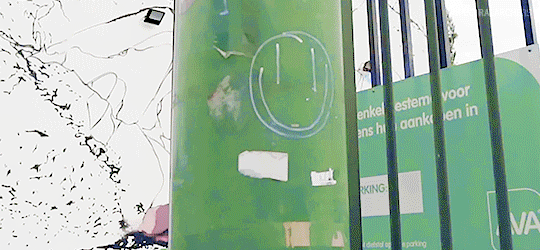
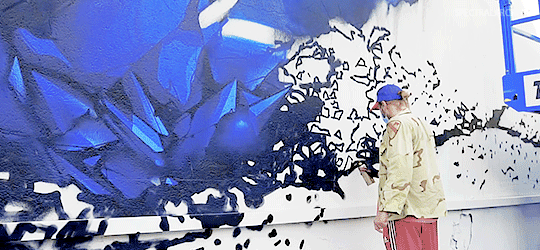
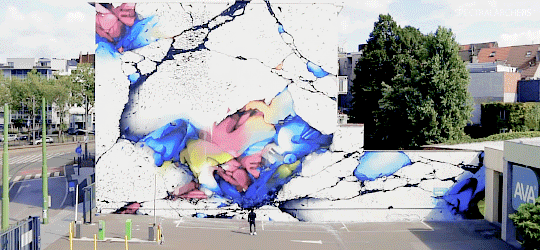
Matthias Schoenaerts aka “zenith” paints an XL mural in Antwerp, Belgium on October 29th 2020 in collaboration with graffiti artist Does
#matthias schoenaerts#matthiasschoenaertsedit#mschoenaertsedit#togcastedit#togedit#dailytogcast#theoldguardcastedit#the old guard#my gifs#he dropped his phone in the paint bucket :(#also i don't know if i'm liking the hipster look or not lmao#ANYWAY HERE IT IS#the timing was horrible because parts of the video were in like super slow motion#so rendering the gifs i was like *screaming*#ANYWAYS#the colors of the mural are a+++++
557 notes
·
View notes
Text

Sorry for the shitty quality! But...could you imagine getting to watch him work like this?! 🎨🎨🎨
91 notes
·
View notes
Link
Matthias Schoenaerts is a Belgian actor, graffiti artist, and film producer. He is widely recognized for his role as Bruno Von Falk in the 2015 movie Suite Francaise and Uncle Vanya in the 2018 Red Sparrow. He was named Knight of the Order of Arts and Letters back in 2015
2 notes
·
View notes
Text

“Yesterday, upon the stair, / I met a man who wasn't t h e r e! / He wasn't there again today. / Oh how I wish he'd go away!”
Below the cut, you can find Jeremy’s basic info, key story points, full bio, and a handful of possible connections, although I am open to most plots! Triggers include death mentions, blood mentions, and a handful of horror elements. Please do feel free to reach out if I can provide context without mention of those topics.
basics
Name: Dr. Jeremy van Damme
Gender/Pronouns: Cismale | He/Him
Date of Birth: January 22, 1981
Age: 39
Hometown: Jersey City, NJ
Length of time in Crescent Harbor: 5 Years
Neighborhood: Hemlock Docks
Occupation: Professor of Anthropology at Crescent College
Faceclaim: Matthias Schoenaerts
key points
An only child, the son of a Belgian-born painter of some renown, but primarily among art types with an interest in niche work
Has a doctorate in anthropology from New York University and now teaches the discipline at Crescent College. Completed his undergrad education in Washington
Devotes most of his research to modern folklore, urban legends, and what he calls ritualistic play: games like Bloody Mary or Charlie Charlie, the latest variation of Juego de la Lapicera, meant to summon something, communicate with something, or achieve specific ends through strict adherence to pre-determined rules or conditions
A history buff. Knows much about the origins of Crescent Harbor and is now actively involved in historical preservation efforts. His interests encompass the periods both prior to and following the actual founding of the town.
Something of a pack-rat. Collects oddities and antiques and allows visitors to poke around his overcrowded house.
full bio (tw: death, blood, horror elements)
If he angled his neck just right, face pressed against the glass, held there by tiny, marker-covered hands, he could just barely see the monster from his bedroom window. The gangling, wide-eyed thing, all teeth and blackened pupils, was caught in an eternal snarl by the glint of the corner street lamp (which had been broken for some time and blinked erratically every few minutes). The light has stay on because the light keeps it there, he would think. So long as the light stays on, it has to stay there and cannot come here. For as long as the boy could remember, though, this massive graffiti creature, the handiwork of some unknown artist or another, had been spray-painted there, overseeing its domain from the red brick facade of an already defunct paper packaging warehouse. And it certainly had not escaped yet. But this particular piece of street art had long frightened the young Jeremy van Damme, who would spend his nights watching it from the safety of his heightened perch.
At that time, he lived with his father (a native of Flanders and painter of some niche surrealist renown) and mother (a full-time college dean and part-time muse to her artiste husband) in a tall brown apartment building that swayed with the wind. The groaning of the foundation, the creaking of the pipes, and the unpleasant damp sweetness, an almost bloody smell, that occasionally wafted out an uncovered vent after a storm, instilled in the boy an early sense of fantastic terror. More often than not, Jeremy van Damme was afraid. At the age of six, he discovered in a forgotten photo album a picture of himself he could not recall taking. And there, he abruptly decided some other Jeremy, a doppelganger or double or mimic, not only existed, but was waiting for the opportunity to strike and swallow him whole. At the age of seven, he got it into his head that a family of venomous lizards had taken up residence in the basement washing machine; he could hear them hissing if he listened closely. And at the age of eight, the death of the elderly woman down the hall gave birth to a new series of existential horrors, of the terrible uncertainty of the afterlife, of restless ghosts, and of white-haired specters that stalked hallways by night in search of little boys to do whatever it is ghosts do.
Nevertheless, the apartment was not vacant for long, and in the weeks that followed, Jeremy struck up a new friendship with a girl his age who had moved into the building with her family. And with how cheery they had painted the place, one could almost forget what happened to poor old Mrs. Hansen there. It was through this new companion, however, that Jeremy himself, albeit wide-eyed and screaming, was introduced to the sort of ritualistic play that would eventually guide his career. With nothing but a pack of stolen matches and the misguided goal of “putting the spirit to rest,” the pair of them locked themselves in her bathroom to chant into the mirror, spin in circles, and search for faces in the glass. And while they never found them, these games did instill in the young Jeremy a new sense of bravery and morbid curiosity. After all, if a ghost could be banished away by something as simple as blowing out a match, maybe they were not so frightening after all.
Still, he had always been curious. His mother was, after all, a career academic, and to that end, Jeremy had little hope of genuinely shirking his homework. He did well in school and read often. Small and eager to be helpful, he was even, in some ways, a natural teacher’s pet, eager to spend more time among the adults than the playground bullies. Eventually, Jeremy attended a nearby “all boys” Catholic high school, and while the AV Club was already dying by that time, he and a few friends began borrowing their camera equipment to “record psychic phenomena,” which largely consisted of them trying to unsuccessfully move rubber balls with their minds.
At sixteen, however, one of the boys got his own car, and the unlikely group was able to finally take part in a bit of local legend that involved circling an abandoned house several times, honking one’s horn, and then flashing one’s headlights. The result was the ghost of “Clarice” appearing in an upper story window to chase the intruders away. Every time they did this ritual, someone in the vehicle would shout that they had seen her (although it was never more than one person at a time). Following one such excursion, one boy disappeared from school with the flu for a week, and there was, at least, a successful rumor he had been spirited away. That was sort of fun.
Upon graduating, near but not quite at the top of his class, Jeremy ultimately attended the University of Washington, eager to spread his wings to the West Coast although Stanford had rejected him. While he began his higher education as a History major, he eventually shifted his focus to cultural anthropology, in which he earned his Bachelor’s degree. Graduate School, a Master’s degree, and a Doctorate from New York University eventually followed, and Jeremy began focusing his field of study more specifically on the role of folklore and legend in the modern world. His first and only full-length book, a small academic piece, entitled Creating Clarice: An Anthropological Case Study on the Invention of a Ghost, sprung to life when he, upon digging through an academic database, discovered the phantom woman he had tried so vehemently to conjure as a teenager had never actually existed.
Combining local interviews, in-depth real estate research, historical records, and a dive into the roots of ritualistic children’s games themselves, he tried, with varying levels of success, to trace the story to its source and frame it in the context of the community that had created it. This research, while mostly published for classroom use, did eventually earn him a position at Crescent College, where he still teaches today.
In his five years in town, Jeremy has since become something of an undisputed expert in local history, collecting trivia in the same way others might collect stamps. That said, Jeremy remains, to this day, a collector in the most traditional sense. His small home, an old building near the docks, has its charms and is known to be full of oddities, antiques, and other things that have caught the owner’s fancy. Most are of local interest, and Jeremy has rather seriously involved himself in town preservation efforts.
possible connections
The Student - Jeremy is a professor at Crescent College and teaches a variety of anthropology courses for all skill levels. This person is either a former or current student. Perhaps Jeremy mentors them, or perhaps they were an eternal thorn in his side.
The Curious - Jeremy collects all sorts of odd objects he finds. From 19th century tea sets, to old letters and photographs, to “haunted” mirrors and dolls, he welcomes this person regularly to poke around the antiques and maybe even goes shopping with them.
The Adventurous - Jeremy’s primary areas of expertise are modern folklore and ritualistic play. He and this person team up to test out the latest spooky games and legends, from trying to summon up a mirror ghost or see if they can get someone from beyond the grave talk with them through a disconnected telephone.
The Historian - Jeremy is well-versed in the history of the town and its founding families. Perhaps this person wants or needs to learn more about some obscure local topic, and the professor is here to help.
4 notes
·
View notes